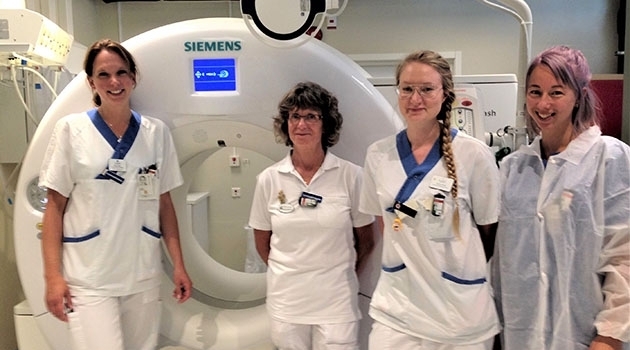SCAPIS database available for research on heart and lung diseases
Over the past five years, more than 30,000 Swedes have undergone extensive health examinations as part of the ongoing Swedish CArdioPulmonary bioImage Study (SCAPIS). Now the study is making its database available for large-scale research aimed at finding people at risk for diseases of the heart, vessels and lungs before they become ill and improving their chances of survival.
Two million Swedes live with cardiovascular disease and 1.3 million with lung diseases. At the same time, current lifestyles and new risk factors place new demands on research. Of the approximately 90,000 Swedes who die annually, almost 40,000 die of cardiovascular diseases.
“The fact that the database will now be available to researchers affiliated with Swedish universities represents an important milestone,” says Johan Sundström, a professor at Uppsala University and cardiologist at the Uppsala University Hospital, who bears the main responsibility for SCAPIS Uppsala. “SCAPIS will be a valuable source for research for many years to come. In the longer term, we hope we can reduce the risk of disease in the heart, vessels and lungs in future generations.”
Uppsala was one of six study centres that welcomed participants in SCAPIS. Region Uppsala and Uppsala University funded parts of this data collection. A total of 5,038 people in Uppsala ages 50 to 64 participated.
Changes over generations
“Each generation needs its own representative study. We have good knowledge of the link between risk factors and cardiopulmonary disease from previous studies, but the total effects on these diseases need to be studied within the framework of the risk factor pattern of each generation,” Sundström emphasises.
As an example, he mentions that obesity and diabetes are more common in the population today compared with several decades ago, when the Framingham study of cardiovascular disease was conducted. At the same time, the proportion of smokers has decreased.
Finding early signs
“In SCAPIS we have also been able to collect a large amount of very valuable data that has not been available in previous studies – among other things, through CT scans of the heart and lungs,” says Sundström. With luck and the help of SCAPIS, we will learn how to find early signs of cardiovascular disease we are not aware of today and be able to give these people a chance at survival.”
Anna Malmberg

